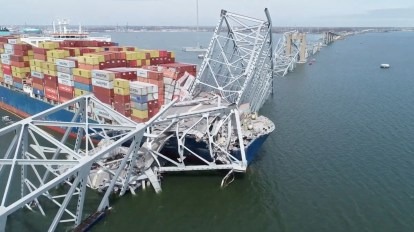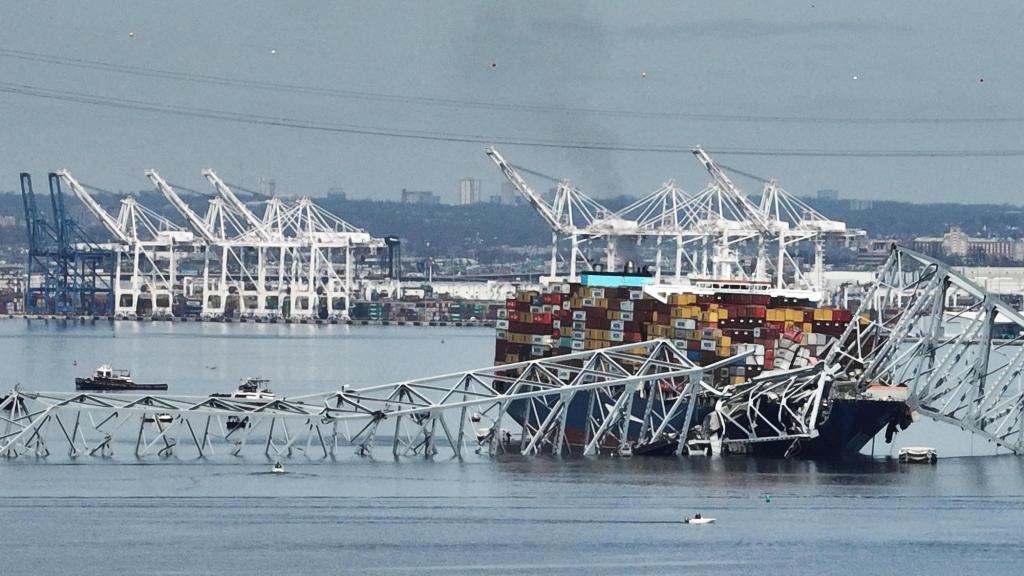Current Situation
On March 26, 2024, at approximately 1:30 a.m. ET, a cargo ship leaving the Baltimore Bridge in Baltimore, Maryland, collided with the Francis Scott Key Bridge (I-695). This led to the collapse of the bridge. Please check this page regularly for the latest relevant commercial vehicle information, including traffic alerts and emergency notifications.
Rescue Efforts Underway
In the wake of the bridge collapse, a massive mobilization of emergency responders has swung into action, with fire departments, paramedics, and law enforcement agencies converging on the scene. Their primary focus is on conducting search and rescue operations, combing through the debris in a race against time to locate any individuals who may be trapped or injured. Every effort is being made to expedite the rescue process and ensure the safety and well-being of all involved.

Impact on Transportation
The collapse of the Francis Scott Key Bridge has dealt a crippling blow to the city’s transportation network, causing gridlock and disruption across key routes and thoroughfares. Motorists are advised to steer clear of the affected area and seek alternative routes to avoid exacerbating congestion. Public transit services may also experience delays or rerouting as authorities work to mitigate the impact of the bridge collapse on commuter traffic.
Investigation and Accountability
As the immediate response to the bridge collapse unfolds, attention inevitably turns to the underlying causes and accountability for this tragic incident. Authorities have pledged to launch a thorough investigation into the collapse, scrutinizing the maintenance history, structural integrity, and oversight mechanisms governing the Francis Scott Key Bridge. Swift action will be taken to hold accountable any parties found negligent or responsible for lapses in safety protocols.
Community Support and Solidarity
In times of crisis, the true character of a community emerges as neighbors come together to offer support and assistance to those in need. The solidarity and resilience of Baltimoreans shine brightly amidst the chaos and uncertainty wrought by the bridge collapse. From volunteer efforts to donations of supplies and resources, the outpouring of support underscores the strength and compassion that define the spirit of Baltimore.

Frequently Asked Questions (FAQs)
Q: What caused the Francis Scott Key Bridge to collapse? A: The cause of the bridge collapse is under investigation, with authorities working diligently to determine the factors that led to this tragic event. Preliminary assessments suggest possible structural deficiencies or unforeseen environmental factors may have played a role.
Q: Are there any reported casualties or injuries from the collapse? A: At present, there are no confirmed reports of casualties or injuries resulting from the bridge collapse. However, rescue operations are ongoing, and authorities are actively monitoring the situation for any developments.
Q: How will the bridge collapse affect transportation in Baltimore? A: The collapse of the Francis Scott Key Bridge has caused significant disruptions to transportation, with road closures and diversions impacting commuter traffic. Motorists are advised to plan their routes accordingly and monitor updates from local authorities.
Q: What should residents in the vicinity of the bridge collapse do? A: Residents living near the collapsed bridge are urged to exercise caution and follow instructions from emergency services. If evacuation or sheltering-in-place is advised, it is essential to comply with official directives to ensure personal safety.
Q: How can I contribute to relief efforts for those affected by the bridge collapse? A: Individuals looking to support relief efforts can consider donating to reputable charitable organizations or volunteering their time and resources to assist affected communities. Every contribution, no matter how small, can make a difference in helping those impacted by this tragedy.
Conclusion
The Francis Scott Key Bridge collapse in Baltimore, MD has significant effects on transportation and emergency response in the region. Rescue processes are ongoing and emergency orders have been issued to help those affected. Commercial motor vehicle drivers should stay updated on traffic alerts, and changes in regulations, especially regarding hours-of-service and dangerous materials transport. The community is coming together to support those affected by the bridge collapse.




